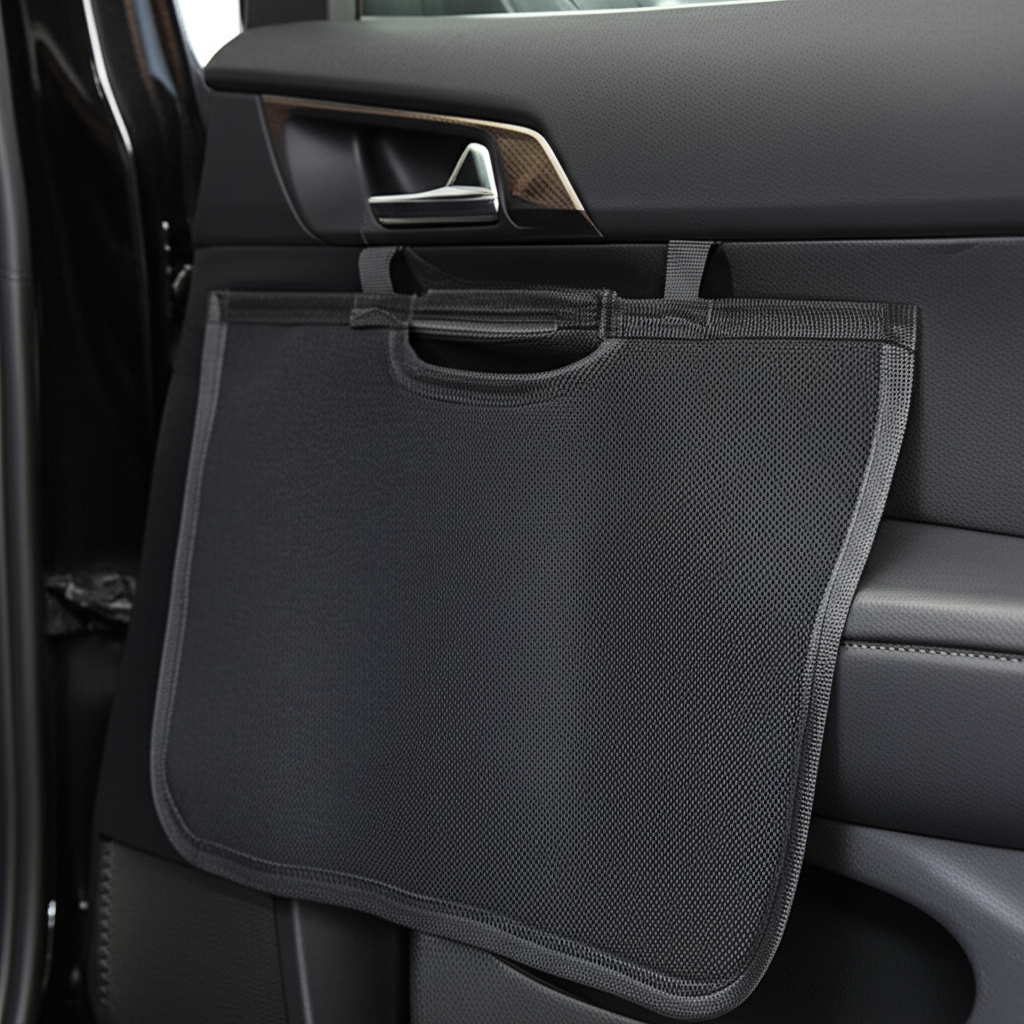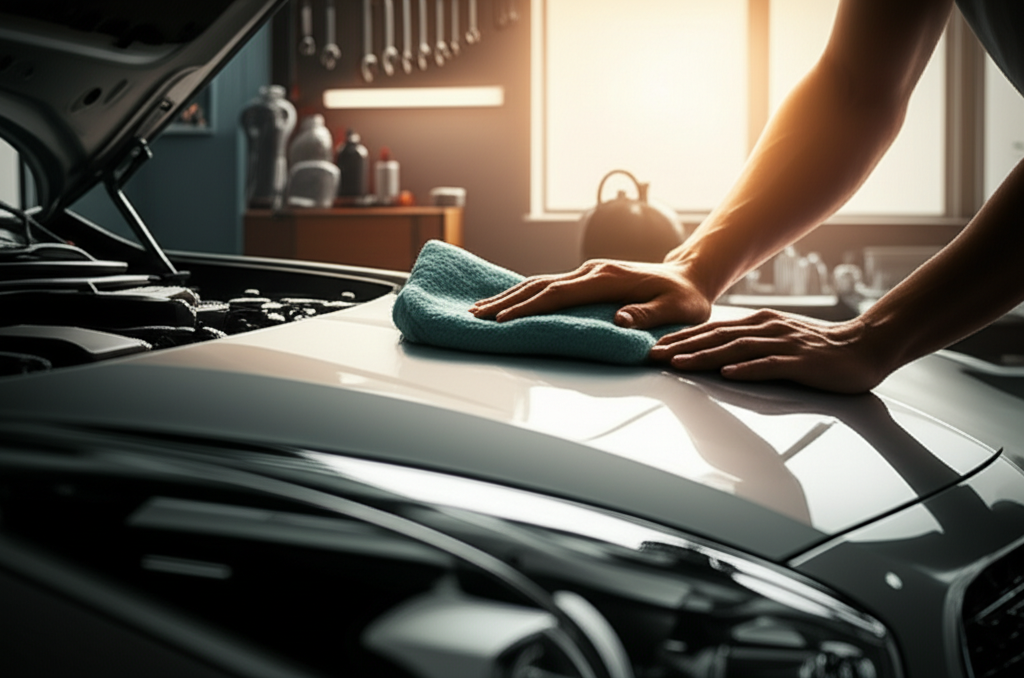A car seat cover for dogs with door protection is a vital accessory to shield your car’s interior from mud, fur, scratches, and moisture, preserving its value and cleanliness while keeping your canine companion comfortable and safe.
Pawsitively messy car rides are a tale as old as time for dog owners. That joyful wagging tail can quickly turn into a whirlwind of fur on your seats, not to mention those muddy paw prints and potential scratches from eager claws. It’s a common frustration that can leave car interiors looking worn and grimy, diminishing your vehicle’s appeal and making cleaning a chore. But what if there was a simple, effective solution? Imagine protecting your car’s upholstery while ensuring your furry friend travels in comfort and safety. This guide will walk you through everything you need to know about car seat covers for dogs, focusing specifically on how they act as essential door protectors. Let’s dive in and discover how to keep your car looking its best, no matter how many adventures you and your pup embark on!
Why Your Car Needs Dog Door Protection

When we think about protecting our car’s interior from our canine companions, we often focus on the seats. That’s understandable! But the doors are a surprisingly vulnerable area. Dogs, especially those who love to look out the window or are still learning leash manners, can do a surprising amount of damage to your car doors.
Think about it: a dog leaning its head out the window can leave drool marks and fur all over the window sill and door panel. Excited pups might scratch the plastic or leather with their claws when trying to get a better view or when they’re simply a little antsy. And if your dog is on the larger side, their body can rub against the door panel, transferring dirt and oils. This is where specialized car seat covers with door protection come in, offering a vital layer of defense.
The Common Culprits of Door Damage
- Scratches: Sharp claws can easily mark and gouge door panels, especially those made of plastic or leather.
- Dirt and Mud: Wet paws and muddy coats can transfer grime to door panels, leaving unsightly stains that are tough to remove.
- Shedding Fur: Dog hair has a knack for clinging to textured surfaces, including car door panels, making them difficult to keep clean.
- Drool and Moisture: A happy dog looking out the window often means slobber. This moisture can seep into materials and cause staining or damage over time.
- Wear and Tear: Constant rubbing from a dog’s body can lead to fading or abrasion of the door panel material.
The Benefits of Integrated Door Protection
Car seat covers designed with built-in door protection offer a comprehensive solution. Instead of just covering the seat, these covers extend up the sides of the seat and often include flaps or panels that drape over your car’s interior door panels. This creates a protective barrier that guards against the common culprits mentioned above.
- Full Interior Shield: It’s not just about the seat anymore; your doors get the same level of protection.
- Preserves Resale Value: Keeping your car’s interior in pristine condition can significantly boost its resale or trade-in value.
- Easier Cleanup: When the cover gets dirty, you can often uninstall it and clean it separately, saving you the hassle of scrubbing your car’s interior.
- Comfort for Your Dog: Many covers are made from durable, yet comfortable materials that provide a soft surface for your dog to rest on.
- Peace of Mind: Knowing your car is protected allows you to relax and enjoy the journey with your furry friend.
Types of Car Seat Covers with Door Protection
Not all car seat covers are created equal, especially when it comes to door protection. Some offer minimal side coverage, while others are designed with robust door guards. Understanding the different types will help you choose the best option for your needs.
Harness-Style Seat Covers
These are the most common type of seat cover. They typically cover the entire seat surface and extend up the back. Many of these will have some degree of side bolster coverage, which offers a basic level of door protection. However, they might not be sufficient for dogs that frequently lean against or scratch the doors.
Hammock-Style Seat Covers
Hammock covers attach to the front and back headrests, creating a suspended platform in the middle of your back seat. This design is excellent for keeping dogs from falling into the footwell and also provides significant coverage for the back of the front seats. Crucially, many hammock designs also include extended side panels or “wings” that can be tucked into the door crevices or draped over the door panels to offer substantial door protection. This is often the most robust solution for integrated door protection.
Bench Seat Covers with Side Flaps
These are more form-fitting covers designed specifically for your bench seat. The key feature here is the inclusion of durable flaps that are designed to either hook onto or tuck into the edges of your car doors. Some premium versions even have zippers or Velcro that allow for easier access to seatbelt anchors or armrests.
Trunk Liners with Door Protection
If your furry friend travels in the trunk area (in SUVs or hatchbacks), look for trunk liners that specifically mention integrated door protection. These are often more heavy-duty than seat covers and may include reinforced side panels that can fold up to cover the cargo area walls, essentially protecting the lower parts of your car’s doors near the trunk opening.
Key Features to Look For
When you’re shopping for a car seat cover that offers excellent door protection, keep an eye out for these important features. These elements will ensure you get a cover that is durable, functional, and safe for both you and your dog.
Material and Durability
The material of the car seat cover is paramount. You want something that can withstand sharp claws, roughhousing, and constant use.
- Waterproof/Water-Resistant: Essential for handling muddy paws, spills, and drool. Look for materials like heavy-duty polyester, nylon, or vinyl with a waterproof backing.
- Tear-Resistant: A tightly woven fabric with reinforced stitching will hold up better against punctures and tears.
- Non-Slip Surface: For your dog’s comfort and safety, a non-slip backing or surface helps prevent them from sliding around during the ride.
Fit and Installation
A cover that fits well is more likely to offer effective door protection. Poorly fitting covers can shift, leaving gaps where dirt and damage can occur.
- Adjustable Straps and Anchors: Look for sturdy buckles, adjustable headrest straps, and seat anchors that can be tucked securely into the seat to keep the cover in place.
- Vehicle-Specific or Universal Fit Options: Some brands offer covers tailored to specific vehicle makes and models, while others provide universal fits that can be adjusted. For door protection, a more tailored fit around the door panels is often better.
- Easy to Install and Remove: You should be able to put the cover on and take it off without a struggle, especially if you need to clean it or remove it for passengers.
Door Protection Mechanisms
This is where the “door protection” aspect truly shines.
- Extended Side Flaps: These are panels of material that hang over the edges of the seat and are designed to tuck into the door jambs or lie flat against the door panels themselves.
- Side Bolster Coverage: Many covers offer extra padding or thicker material on the sides of the seat, which can help prevent claw damage to the door panels when your dog enters or exits the vehicle.
- Reinforced Edges: Look for covers with reinforced stitching along the edges where the seat cover meets the door panel to prevent premature wear and tear.
Safety Features
Beyond protection, safety for your dog is crucial.
- Seatbelt Openings: Ensure the cover has strategically placed openings or zippers to allow you to easily access your car’s seatbelt anchors and secure your dog with a harness.
- Non-Toxic Materials: Always check that the materials used are safe and non-toxic for your pet.
How to Install a Car Seat Cover with Door Protection
Installing a car seat cover with door protection is generally straightforward, but taking your time and following these steps will ensure it’s done correctly and effectively. This is key to maximizing the protective benefits for your car doors.
Step-by-Step Installation Guide
1. Prepare Your Car: Before you begin, give your car’s interior, especially the back seat and door panels, a quick vacuum and wipe-down. This ensures you’re not trapping dirt underneath the cover.
2. Identify the Cover Type: Determine if you have a hammock-style, bench-style, or seat-specific cover. The installation will vary slightly.
3. Position the Cover: Lay the seat cover flat over your back seat or designated area. For hammock styles, drape it so it hangs over the backs of the front seats. For bench covers, align it with the seat cushioning.
4. Attach Headrest Straps: For hammock and many bench covers, there will be straps that loop around the headrests. Adjust these straps to create a snug fit. Some straps might require threading through the headrest posts.
5. Secure Seat Anchors: Locate the seat anchors. These are often elastic loops or fabric tabs that you’ll tuck down between the seat cushion and the seat back. This is critical for preventing the cover from shifting and provides a more secure fit.
6. Deploy Door Protection Flaps: This is the most crucial part for door protection.
Tuck-in Style: If your cover has flaps designed to tuck in, carefully insert them down into the door jambs, between the door panel and the door frame. Press them firmly to seat them.
Drape-Over Style: If the flaps are meant to lie against the door panels, carefully unfold them and position them so they cover the desired area of your door. You might need to tuck them slightly under the window seal for them to stay in place.
Consider Extra Securing: For very active dogs or rougher rides, you might find that the flaps stay in place better if you gently tuck them under the edge of the interior door panel or a bit under the window weather stripping. Be gentle to avoid damaging the seals.
7. Fasten Anybuckles or Velcro: Some advanced covers may have additional buckles or Velcro straps along the sides or bottom to cinch the cover tighter to the seat and doors. Secure these as instructed.
8. Check for Snugness: Once installed, give the cover a good tug in various places. It should feel secure, with minimal slack or sagging. Ensure the door protection flaps are covering the areas you intend to protect.
9. Locate Seatbelt Openings: Some covers have pre-cut openings for seatbelts. Others might have zippers or Velcro that you can open to access them. Make sure these are easily accessible for securing your dog.
Tips for Maximizing Door Protection
Consider “Door Panel Protectors”: Some specialized products are designed purely as door panel protectors and can be used in conjunction with a seat cover for ultimate defense. These often attach via Velcro and are made of heavy-duty, waterproof material.
Reinforce with Velcro: If your door flaps tend to come loose, consider adding small strips of heavy-duty Velcro to the back of the flap and a corresponding spot on the inside of your car’s door panel (ensure you use a type that won’t damage your interior).
Train Your Dog: Teaching your dog to enter and exit the vehicle calmly can significantly reduce wear and tear on doors, even with a cover installed.
* Regular Maintenance: Periodically check the fit of your cover and reposition the door flaps as needed. It’s also a good time to inspect your car’s door panels for any signs of wear that might require additional attention.
For an authoritative perspective on protecting your car’s interior, consider resources like the AutoZone guide on car interior cleaning, which highlights the importance of protecting surfaces from everyday wear and tear, including what pets can bring.
Maintaining Your Car Seat Cover for Longevity
A car seat cover is an investment, and with proper care, it can last for years, continuing to protect your car’s doors and seats from your furry co-pilot. Regular maintenance ensures it stays effective and hygienic.
Cleaning Your Dog Seat Cover
The cleaning instructions will vary depending on the material of your cover, so always check the manufacturer’s guidelines first. However, here are some general best practices:
- Shake Off Loose Debris: Before any wet cleaning, give the cover a good shake outdoors to remove loose fur, dirt, and debris.
- Spot Cleaning: For minor spills or messes, a damp cloth with mild soap or a pet-safe upholstery cleaner is often sufficient.
- Vacuuming: Regularly vacuuming the cover, especially after shedding seasons, will help remove embedded fur and dust. Use the upholstery attachment for best results.
- Wiping Down Door Flaps: The door flaps are often the dirtiest part. Use a damp cloth or a mild cleaning solution to wipe them down frequently. If they are very muddy, you might need to remove them for a more thorough clean.
- Machine Washing: Many covers are machine washable. If yours is, use a gentle cycle with cold water and a mild detergent. Avoid using fabric softeners, as they can affect the waterproof coating or the non-slip backing. Always air dry; never put it in a machine dryer, as the heat can warp or melt the material.
- Drying is Key: Ensure the cover is completely dry before putting it back in the car. Moisture trapped under the cover can lead to mold and mildew issues.
When to Consider a Replacement
Even the best car seat covers will eventually show signs of wear. Here’s when it might be time to invest in a new one:
- Significant Tears or Holes: If the fabric is heavily torn, especially in critical areas like the door flaps or seat anchor points, its protective capabilities will be compromised.
- Worn-Out Waterproofing: If the waterproof coating has degraded and the material is no longer effectively repelling liquids, it’s time for a change.
- Degraded Non-Slip Backing: A cover that slides around easily, even when properly installed, indicates that the non-slip backing has worn out. This is a safety concern for your dog.
- Persistent Odors: If, despite thorough cleaning, the cover still harbors persistent odors, it might be time for hygienic reasons.
- Compromised Door Protection: If the door flaps are torn, stretched out, or no longer stay in place, they are no longer providing adequate protection to your car’s doors.
Pros and Cons of Using Door-Protecting Seat Covers
Like any automotive accessory, car seat covers designed for door protection come with their own set of advantages and disadvantages. Understanding these can help you make an informed decision.
The Upside:
| Pro | Benefit |
|---|---|
| Comprehensive Protection | Guards seats, floors, and crucially, interior door panels from scratches, mud, fur, and moisture. |
| Preserves Car Value | Keeps the interior in pristine condition, which is vital for resale or trade-in value. |
| Easier Vehicle Cleaning | Removable and often washable, making it simpler to clean than the car’s interior itself. |
| Dog Comfort and Safety | Provides a soft, stable, and often non-slip surface for pets. |
| Versatility | Available in various styles, materials, and fits to suit different vehicles and dog sizes. |
| Reduces Wear and Tear | Minimizes the need for expensive upholstery repairs or professional detailing. |
The Downside:
| Con | Consideration |
|---|---|
| Fit Issues | Universal fits may not always be perfect, potentially leaving small gaps or not optimally covering all door panel areas. |
| Installation Time | Initial installation and occasional readjustment of the door flaps can take a few minutes. |
| Potential for Snagging | In some vehicles, if not tucked carefully, the door flaps could potentially snag on seatbelt buckles or other interior components. |
| Cost | Covers with robust door protection features can be more expensive than basic seat covers. |
| Aesthetics | Some users may find they detract from the car’s interior aesthetics, though many are designed to look sleek. |
For a deeper dive into automotive accessories that enhance your vehicle, consider exploring the Consumer Reports guide on car accessories, which often touches upon practical items that improve car ownership experience and protection.
Frequently Asked Questions (FAQ)
Q1: How do I choose the right size car seat cover for my dog and car?
A1: Measure your car’s back seat
Recent Posts
Cold-Weather Driving Essentials: Top Gloves for Safe Winter Travel
Keep your hands warm and your steering wheel secure this winter with our top glove picks. Discover the best options for safe and comfortable cold-weather driving!
Tesla Roof Rack Storage: Ultimate Guide to Secure and Versatile Cargo Solutions
Tesla roof rack storage offers extra space to carry luggage and gear securely on your Model Y. These racks fit various needs, from bikes to kayaks, making travel easier. ...


